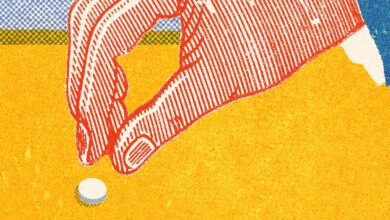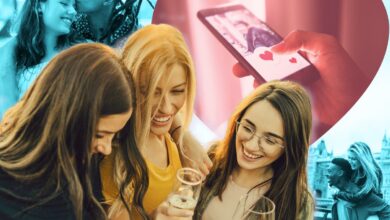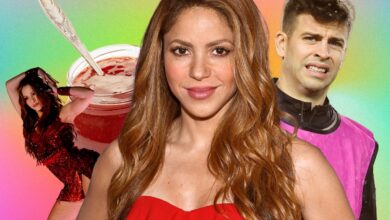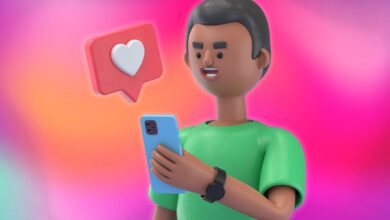There’s a lost generation trapped in the gap between straight and gay

In the last census, 1.5 per cent of respondents identified as gay or lesbian while 1.3 per cent identified as bisexual. It’s not a huge gap statistically, is it? But culturally it’s another story. For example, you’d smash it on a game show if you were asked to name 10 famous gay or lesbian celebrities in a minute. But imagine the strife of naming 10 avowedly bisexual, queer or pansexual ones? You might get Cara Delevingne, Miley Cyrus, Janelle Monae or Joe Lycett if you were super clued up. You might say Freddie Mercury – but they’d have to stop taping while everyone debated it for an hour before realising this was the single worst game-show concept of all time.
I was at London Pride last weekend, which was happy, sunny, and rightly felt much more focused on promoting trans rights than ever before. Yet if you read the biogs of the 600 parade groups who marched, the word “bisexual” only comes up 16 times, while “pansexual” only gets two mentions. I identify as the latter. I’m attracted to people irrespective of their gender, be they trans, female, male, non-binary. I shop from every aisle of the sexual supermarket and am myself open to being snapped up by any and all customers. Counterintuitively, though, while you’d imagine that (theoretically) being a green light to everyone would make you super popular, I feel like the exact opposite is true – for me and many others like me. Fancying more than one gender is so misunderstood – from the mainstream to the margins – that it’s starting to become a drag.
Obviously in society there are bigoted people – both gay and straight – who act in a prejudiced way towards those with sexualities that aren’t theirs. But beyond the haters, you realise as a pansexual person that there’s a much wider group of people who are both tolerant and liberal yet would never, ever consider a pansexual person to be an eligible partner. They like and respect gay or queer people, but for some reason are still innately grossed out by the idea of dating someone who enjoys the full smorgasbord of genital offerings. This plays out on things like dating apps, for example, where bi/pan people can be filtered out and never engaged with, or just anecdotally, when people get weird when you bring up the whole not-being-straight thing.
I know from experience that people who surf the gender superhighway are the same as everyone else. So why don’t more people know this? I think the lack of positive role models here is a big factor. Sure, it’s definitely getting better. I love, for example, that Dan Levy’s character in the comedy series Schitt’s Creek explained his pansexuality thus: “I do drink red wine, but I also drink white wine, and I’ve been known to sample the occasional rosé.” But we have a terrible history in this regard. Flick back to 1979 and we can see David Bowie being asked on live television if he’s bisexual. When he says he is, the interviewer Mavis Nicolson can only reply with a floundering sense of disbelief – “Does that mean, though, that you… really are…”. Bowie authoritatively closes the lid with a calm: “I’ve answered the question.” It’s tempting to think this looks dated, but I’m not sure things have gotten any better in 2023.
Even though we seem to be living in more fluid times, people tend to respond to the notion of liking multiple genders with that same need to prod, poke and question. Some ask if we’re indecisive. We’re not (and that’s my final answer). Some wonder if we’re promiscuous sex maniacs. Maybe, but would you prefer a pansexual who was honest and open about their flaws, or a straight person who will cheat in secret and break your heart? I’m lucky enough to feel confident to answer such queries, which is part of the reason I like relatively unknown terms like pansexual or bi+ (a way of indicating that you’re not limited by binary concepts of sexuality or gender). They provoke questions – questions I’m happy to answer.
A big part of my confidence blatantly comes from the fact that I’m a man. If I was a straight-looking woman who fancied women (think the outdated term “lipstick lesbian” as one example), things would be altogether different. To be clear, this is a mess men mostly made. Decades of porny “girl-on-girl action” tropes (in films, art, music videos and more) mean that if a straight-looking women snogs another straight-looking woman in public, they are variously presumed to be sluts by straight men, craven attention-seekers by straight women, and maybe worst of all, verboten from the LGBT+ community by their queer peers. Not truly gay. Stereotyped by people striving to reject gender stereotypes.
Anecdotally, this happens in gay clubs, where such women are called “tourists”. It also happens in hyperspeed when bi/pan women have kids, such as when a bisexual mother friend pushing a buggy at a Pride event one year was told, “Go home, it’s not your party.” In 2020, research showed that while three in five gay men and lesbians were out to their families, only one in five bi people were out. There really is a trapped generation of women in this strange stasis, who demur from using terms like bisexual or pansexual for fear of wading into a dialogue they can’t control, one that provokes extreme, judgemental reactions from so many sides. Their input into the queer dialogue is utterly valid yet cruelly lost.
While many straight men have been conditioned to fetishise women who fancy other women, I can hilariously report that the opposite is seldom true. From my experience, most straight women are absolutely terrified of the idea of their man giving a blow job, for example. I’ve been on a couple of dates with couples who supposedly were open to all genders, where both times the idea of any male-male play was an absolute raging no. I could also write a book about how utterly confused almost all gay men I’ve met seem to be by the idea of a vagina, but that book would be a worse idea than that game show.
A more common experience is when people think I’m gay just because I like men. (I acknowledge this sounds barmy, but stay with me, people…) A great example was after DJing a Pride event last year. I was slowly wading through a crowd to find my friends. In the melée, a woman in a posse of gal pals – all giving straight hen-do vibes – stopped me, said nice words about the tunes, then went on to tell me how much she enjoyed Pride because men like me weren’t “interested in us sexually”.
I so nearly left it alone. My friends were waving me over, but I couldn’t help myself. I went back to the woman and explained that, actually, I’m not a gay man, per se: I like sleeping with men, and women, and people of any gender, and I have two kids from a relationship with a woman that ended a few years ago, and it’s sad that Pride events have a history of being all about gay men but whaddyagonnado. She was baffled, so I stayed talking to her for another 45 minutes, and my friends just gave up on me.
I said before that I’m happy to answer the questions, and to chat to random people on dancefloors for ever and ever about being pansexual, and that’s true. But for a slim 0.2 percentage point gap between the gay and bisexual populations in England and Wales, the gulf between people’s understanding of the two tribes is simply too big. We need to start making an effort to normalise this very benign, uncontroversial lifestyle choice as quickly as possible.
Maybe we need to start assuming people are pansexual unless they say otherwise? I confidently predict that a burgeoning generation of more fluid, queer kids are coming through the ranks. I doubt they’ll be as inclined to patiently answer all the questions.





